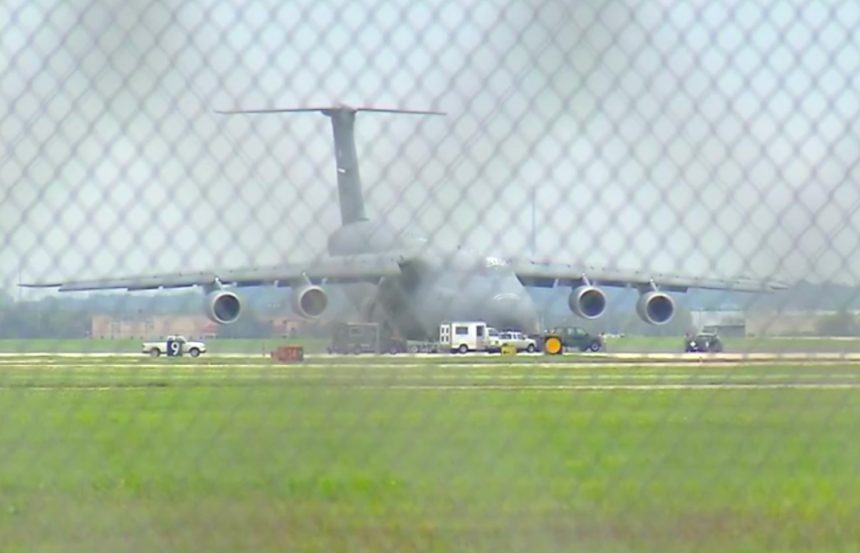It’s the second time a Super Galaxy lands on nose after gear malfunction in less than one year.
On Mar. 15, an Air Force Reserve Command C-5M Super Galaxy performed an emergency landing at Joint Base San Antonio-Lackland, Texas: a failure caused the airlifter to land on its nose, skidding three-quarters of the way down the 11,500-foot runway before coming to a stop.
There were 11 personnel on board, but no injuries were reported.
Noteworthy, although this was the first incident of this kind for the 433rd Airlift Wing, it’s the second time a C-5M lands on its nose in less than one year. Indeed, a Super Galaxy performed a nose gear up landing at Rota Air Base in Spain in May 2017.
As a consequence of a second malfunction of a C-5’s nose landing gear (occurred on Jul. 15), the U.S. Air Force initially grounded 18 Galaxy cargo planes based at Dover Air Force Base (out of 56 flown by the Air Mobility Command) pending further investigation, on Jul. 18. But, on the very next day, AMC’s Gen. Carlton Everhart ordered a fleetwide assessment of the command’s 56 C-5s.
During the assessment, maintainers found that the ball-screw drive assembly was causing issues with the extension and retraction of the nose landing gear.
The ball-screw assembly was replaced for all C-5s in the fleet (including the aircraft involved in the latest incident) and the Super Galaxy cargo aircraft slowly returned to service: the grounding was lifted for 5 C-5s at the beginning of August; at the beginning of September 2017, 38 out of 56 aircraft were ready to fly again. On Sept. 18, the first C-5M to ever land at Princess Juliana Airport in St. Maarten, as part of the Hurricane Irma relief efforts, was the example 86-0020, the same involved in a nose gear up landing at Rota Air Base, on May 23, 2017.
Initial information suggests last week’s incident at Joint Base San Antonio-Lackland is an isolated event, AMC spokesperson told Air Force Times. However, the frequency of nose gear issues (three in less than one year, with two of those causing nose gear up landings) seems at least a bit unusual.
For some details about Galaxy historical nose gear up or belly landings, read this post we published a few months ago.
Top image credit: screenshot from KCBY-TV









